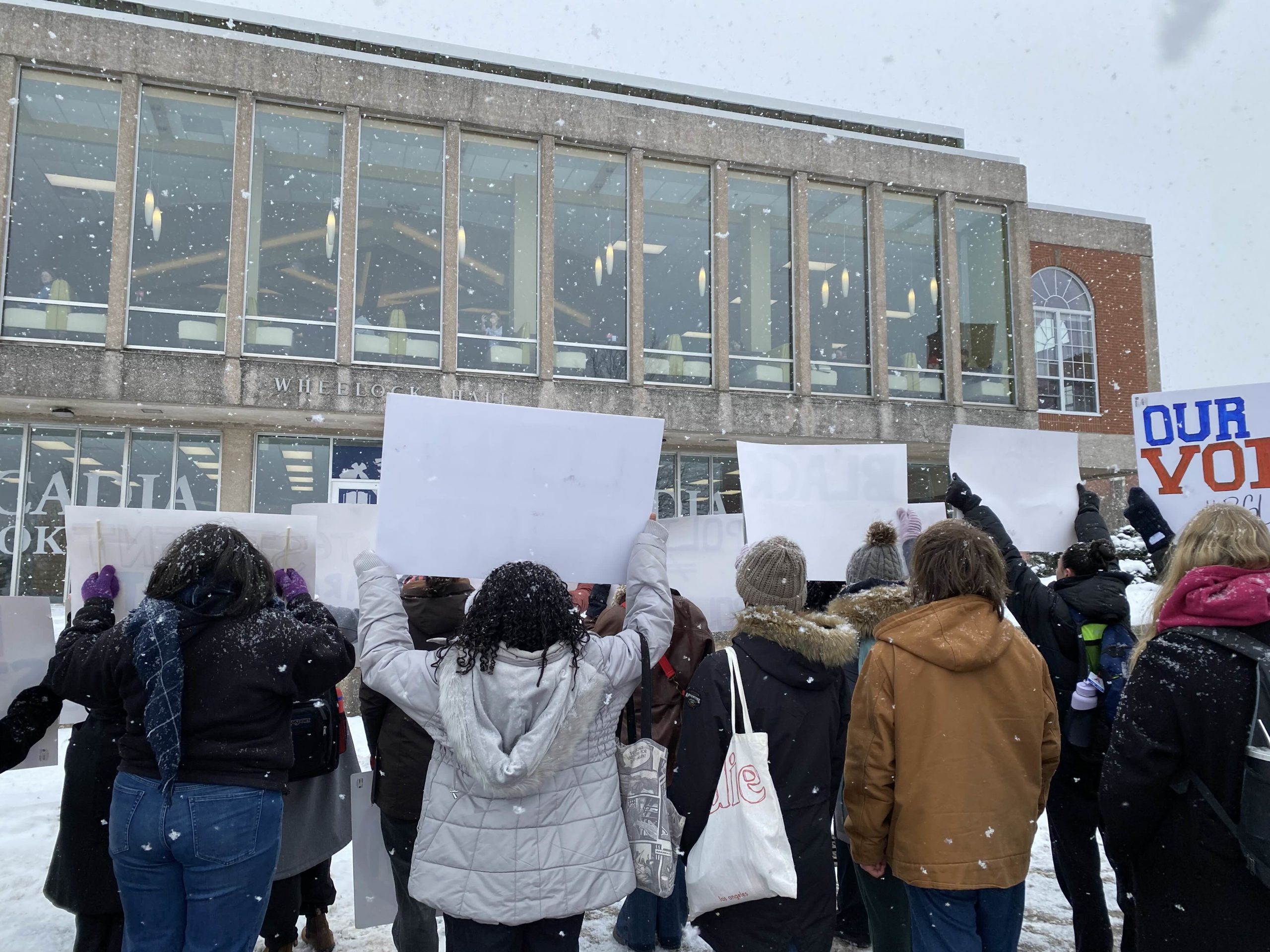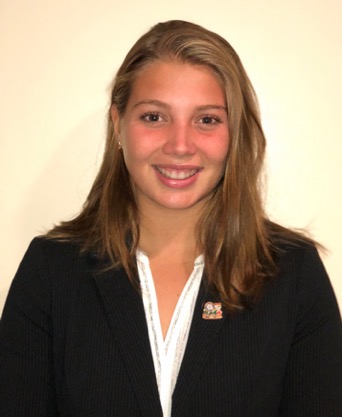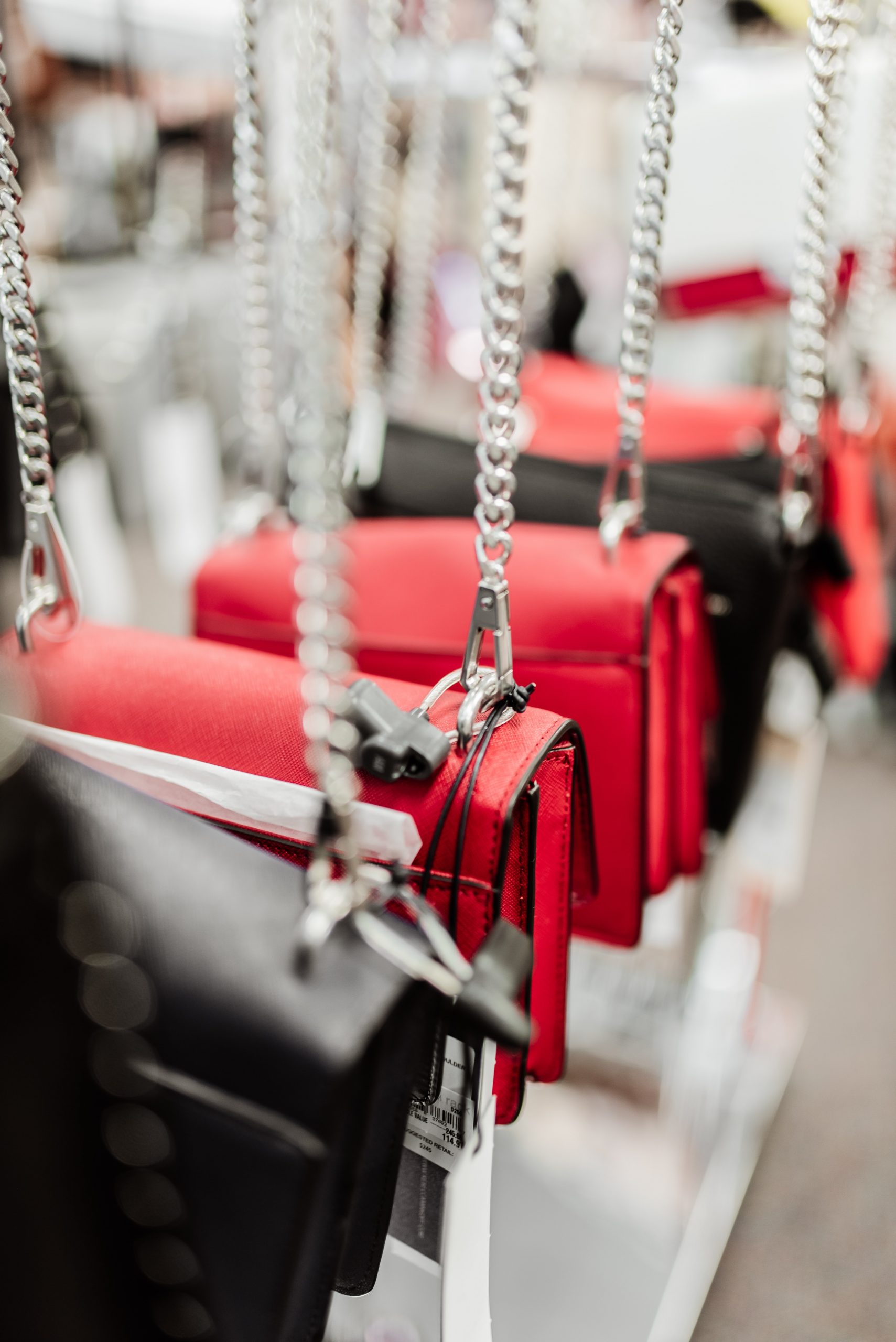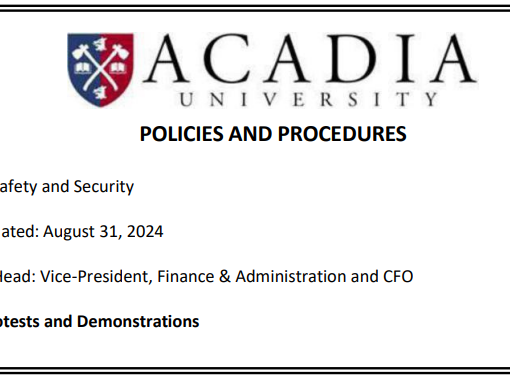January 29th, 2025, 10:30am. A little over a dozen students assemble in front of Acadia’s University Hall. Most of them dressed in black, red, and orange, several holding signs, and all of them there to protest for the sake of Black and Indigenous Students on Campus.
The Athenaeum has already run two articles, both run by event organiser Megan Glasgow, to bring awareness to this protest and the issues it’s seeking to address. To attempt avoiding those articles already up for you to read; the long and short of it was that the position of African Descent Student Opportunity Success Coordinator previously held by Dotun Olutoke would not be renewed. This means that the administration would not be continuing his work of event organizing and providing resources for Black students to pursue an education at Acadia. This news led to Megan to pull together a group of friends to take action, and after an open meeting on January 26th to make a plan of action a protest was set for the 29th.
The movement’s concerns included consequences for racism on campus from students and faculty, continued support for the African Descent Student Opportunity Success Coordinator position and making sure the position had the resources to fully support Black and Indigenous Students, greater transparency in the decision making process for Acadia policy. An additional concern was for a re-evaluation of Chartwells, the company in charge of food services at Acadia, to ensure that their menu strives for greater authenticity and variety in the food they serve.
Student protesters also cited concerns about Acadia’s recently instituted protest policy. The policy was written following a series of student encampments across North America demanding divestment of academic and financial support from Israel to show solidarity with Palesitne. Acadia has never had such an encampment but given the timing the intent seems to be preventing one from ever occurring, with long term encampments being explicitly prohibited under section 3.3.
By the time the march was ready to start the size of the crowd had grown to three dozen, all ready to march around Campus to draw attention to the cause (the original plans were to extend the march down to main street but the weather that day caused a change of plans). After a twenty minute march the parade returned to University Hall to present in front of the University Admin team.
After the speakers had finished, the current President of Acadia, Jeff Hennessy, took an opportunity to address the assembled students. Hennessy assured the movement that they had been heard and that the Administrative Board had been having conversations internally about some of these issues already. He encouraged students to bring issues forward as the Board was willing to hear student’s concerns, also saying that protest was not necessary for the Admin team to listen. Interesting choice of words for talking to protestors Though to Hennessy’s credit his interest in having more students in the decision making process seemed genuine, pointing out positions in Acadia’s Senate for students to play a role in deciding policy, only one of which has been filled.
Hennson’s comments do speak to an issue highlighted by the protest’s turnout, and that’s getting awareness of these issues and student’s ability to take action to the student body. When asked about how protesters heard about the event, I got a couple different answers as to how. One common source was a talk given on campus by Desmond Cole, a Canadian journalist and author, who predominantly covers issues of racism, colonialism, and white supremacy. A few others said that they had heard about it from posts on social media or the Ath’s other articles on the subject (which as a member of the team did make me proud to hear). For the majority of protesters however they got involved because they were already friends with the organizers. We at the Ath didn’t know about this until one of the coordinators came to us to tell us about it. While almost 3 dozen students is far from a dismissable number on a campus as small as Acadia, it’s easy to imagine there would be a much shorter path to the movement’s goals if even a hundred students managed to turn up.
As it stands, Megan and the other organizers are getting ready to start discussions with Acadia Admin and see what further actions are necessary. Another plan in the works is to start official social media channels for the movement. Currently, most of their outreach has been through the @/acadia4liberatedpalestine socials, which are at present the best place to follow to keep up to date with what’s happening with this movement.
If you would like to show your support, please follow the link below to sign a petition written by the movement’s organizers to make your voice heard.





